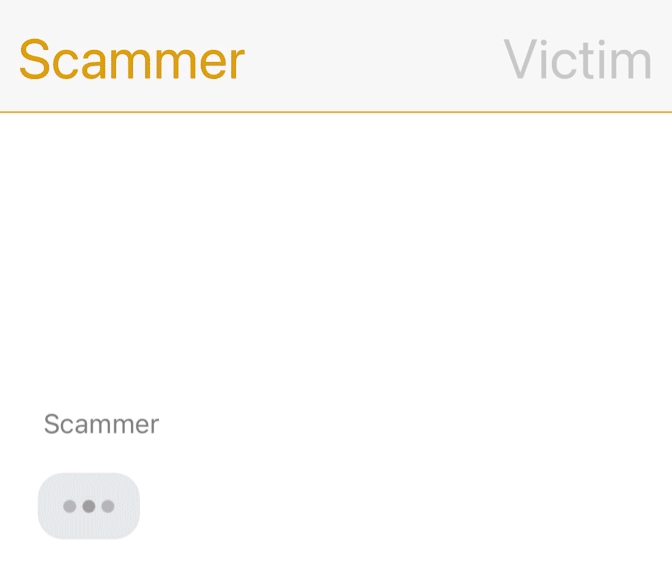How Do PayPal Refund Scams & Other “Money Back” Tricks Work? How Can You Protect Yourself?
A PayPal refund scam (also known as a PayPal overpayment scam) is a crafty, but surprisingly simple form of wire fraud.
These overpayment scams typically involve someone making a purchase from you, but then sending you more for an item than you expected. The fraudster will then claim the overpayment was a mistake, or offer some other excuse, and request that you return the difference.
This might not seem alarming at first. If you send that money, though, you might lose even more than the value of the initial sale.
Refund scams like this can be a real disaster if you fall prey to one. Thankfully, they’re also relatively easy to avoid if you know what to watch out for.
Recommended reading
- PayPal Purchase Protection: What is it & How Does it Work?
- eBay Resolution Center: The Guide for Buyers & Sellers
- PayPal Account Limitations? Here’s 5 Ways to Respond.
- What is PayPal Seller Protection? How Does it Work?
- What is PayPal Chargeback Protection?
- 20 Ways to Identify & Prevent PayPal Scam Emails
How These Refund Scams Work
As we touched on earlier, a PayPal refund scam is a form of wire fraud, meaning it’s financial fraud involving the use of telecommunication technology. Wire fraud covers a lot of different practices, all focused on different targets. With overpayment and refund scams specifically, it seems that scammers generally try to target small-scale, good-natured sellers who want to do the right thing.
In short, a scammer arranges to make a purchase, typically using a peer-to-peer payment platform like PayPal, Cash App, or other similar service. The buyer overpays for the item, then contacts the seller, saying the extra amount was an oversight or a mistake, and requests a refund.
In many cases, the buyer will ask for the funds to be sent to a third account. Typically, they’ll offer some excuse, such as that the original account is closed. So, the seller innocently sends the refund, ships the item sold, and assumes the matter is settled.
What the seller doesn’t realize is that the buyer is actually a fraudster, and they’re spending money from a hijacked credit card or PayPal account. Upon receiving the “refund,” the scammer will vanish. Then, when the real user discovers the fraud, the merchant gets hit with a dispute.
Another variation on this theme is a first-person PayPal refund scam. Here, the buyer will wait for the seller to transfer the funds for the overpaid amount, then will either cancel the payment for the original transaction, or file a dispute for reimbursement.
How to Tell if You're Being Targeted: 3 Red Flags
PayPal scams are fairly prevalent on Facebook Marketplace, LetGo, and Craigslist. There are a lot of different tactics, including advance fee scams, shipping label scams, and phishing scams.
PayPal refund scams, in particular, are confidence scams for the digital age. To make them happen, the scammer has to convince you that they made an innocent mistake that only you can rectify. They will usually appear approachable and friendly, but in a bit of a hurry. After all, they have to instill a sense of urgency in order to convince you to rush a payment without really thinking it through.
Unsure if the person on the other end of a transaction is a PayPal refund scammer? Watch for these red flags in your buyer’s demeanor or behavior:
Red Flag #1 | Overpayment
The first red flag you should be aware of is that an overpayment was processed at all. Think about it: how many times have you accidentally overpaid for an item? How often have customers you know and trust paid you more than the price quoted?
It’s possible for a user to key-in the wrong amount when sending a payment via PayPal or other P2P service. However, it’s not exactly likely.
Red Flag #2 | Urgency
The urgency they approach you with is your second red flag. Posing as a legitimate buyer, the scammer is going to be in a hurry to get their overpayment back. They will contact you and attempt to push you to wire them a refund for their overpayment. If you respond with discernible suspicion, they can get nasty very quickly.
Cancellation or refunding the order to the original account won’t satisfy them. The only reason a buyer would take issue with a canceled order is that they aren’t going to get anything out of it. If a full refund was what they wanted, they wouldn’t be pushing for you to wire money to another account.
Red Flag #3 | Vague or Illogical Conversations
The messages exchanged between you and this individual will often be strange. They may be tonally flat, long-winded and rambling, and full of misspellings and uncommon grammatical errors.
You may see odd word choices, or phrases like “kindly,” “please to,” or “thanks you.” Another common error is to use “Dear” as if it’s a title, rather than a salutation. These aren’t commonly used in the US or UK, and suggest the buyer may be operating from overseas.

If you accept PayPal for goods and services, you could be targeted for PayPal refund scams. Keep in mind that scams like this don’t just happen on PayPal, though. Amazon Marketplace scams and Cash App refund scams are popular with fraudsters, too, because they are fairly easy to perpetrate with little upfront legwork.
Generally speaking, you may always be a target for scammers so long as you sell goods and services through any P2P platform. While this isn’t great news, it doesn’t have to be the end of the world. Simply being aware of the risks and committing to a few best practices can prevent you from becoming a victim.

How to Stop a PayPal Refund Scams
Make it a shop policy to never simply comply with a request for an overpayment to be refunded. Period.
If you approach each attempt as a scam right off the bat, you’re far less likely to fall prey to a PayPal refund scam. If you are contacted by a buyer demanding or requesting a refund for an overpayment, immediately cancel the order, rather than refunding it.
Here is a step-by-step process to follow if you’re being you have been targeted:
Step #1 | Cancel the Transaction
You probably won’t know for certain that you’re being targeted until the fraudster contacts you for an overpayment refund. However, if you notice the overpayment before they contact you, there’s still time to stop it by canceling the transaction and reporting it to PayPal. Any overpayment you receive should be canceled as soon as you become aware of it. Treat that transaction as you would in any case of suspected fraud.
Step #2 | Cancel The Order
If you are contacted by the buyer asking for an overpayment return, there still might be time to stop the order from finalizing. Once the buyer asks for the overpayment refund, inform them that your shop policy does not refund overpayments or wire money to accounts outside of PayPal. Calmly inform the buyer that the order will be canceled immediately, but that they’re welcome to attempt it again with the correct amount. No legitimate buyer would have a problem with this.
Step #3 | Report the Transaction
Regardless of whether or not you’ve already been a victim of PayPal refund fraud or not, you should immediately report the suspicious transaction. Even if the buyer seems to be a legitimate account holder, they may have been a victim of account takeover fraud and have no idea that someone has been using it. Report the transaction to PayPal right away. If the scammer attempts to contact you, take screenshots of the conversation and forward them to PayPal. This may help the platform verify what’s going on.
What to Do if You’ve Been a Victim
The three-step process above should help you avoid PayPal refund scams. What do you do if you already wired the money requested, though?
If it’s too late, and you’ve already sent the funds the scammer requested, there are a few things you can do to mitigate your losses. It’s important to note that you won’t get the money you sent back, nor the item, if it’s already been sent out. At this stage, you’re in damage control.
Here are your next steps:
Step #1 | Stop Communicating
The scammer may have already ceased communicating with you, or they could attempt to ask you to send more money under the pretext that the funds didn’t go through. In either case, take screenshots of every conversation you had with them, then block that number or email address from contacting you.
Step #2 | Report the Scam to PayPal
Using the same link provided above, contact PayPal to report the scam. Click on “report a problem” and select the transaction in question. Following the prompts that pop up, inform PayPal of every detail, and include the screenshots of the conversations you had with the scammer.
Step #3 | Contact Your Bank
The buck doesn’t stop at PayPal. You’ll need to inform your bank that you have been scammed. Usually, once money is wired, it’s gone. You never know, though; your bank may be able to cancel the transaction on their end, and could potentially help you recover at least some of your money. While this isn’t guaranteed, it’s worth a shot.
Step #4 | Report the Incident to the FTC
This should be your last step in the process. While it won’t get you your money back, reporting the scam to the Federal Trade Commission could help you or someone else from becoming a victim.
PayPal Refund Scams: A Final Note
Unfortunately, there is no surefire way to protect yourself and your business from fraud. What works for one business might not work for another, and every business is different. That said, following the steps outlined above could help prevent PayPal refund scams and other types of fraud.
Whether you’re fighting PayPal refund scams or another form of criminal fraud, the more solutions you combine together, the lower your risk threshold should be. With advanced fraud prevention solutions, though, you could limit risk, increase revenue, and improve customer satisfaction.
FAQs
Can you get scammed on PayPal receiving money?
Yes! Also known as a PayPal overpayment scam, a PayPal refund scam involves someone sending you more for an item than you asked for expected, then requesting that you return the difference. This might not seem alarming initially. If you send that money, though, you might lose more than the value of the original sale.
How can you tell a PayPal scammer?
The absolute best way to spot a PayPal refund scammer is if you notice an overpayment for a given transaction. Most legitimate buyers don’t pay more money than an item’s list price, mistakenly or otherwise.
The next way to detect a scammer is if they contact you to return the money to them. If the buyer was legitimate, they would be happy to cancel the transaction, not ask for a further exchange of funds.
Lastly, if the buyer asks you to send the money to an account other than the one used for the original transaction, stop talking to them altogether and report the incident to PayPal. They are most likely a scammer.
How do I get my money back From a PayPal Scam?
Unfortunately, you probably won’t get your money back from a PayPal scam unless you manage to cancel the transaction before the item is shipped.













